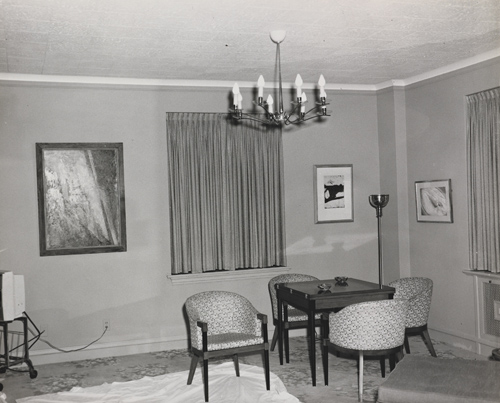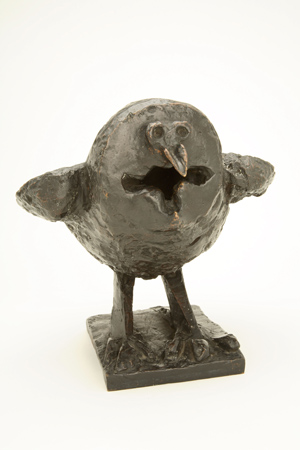If the events of November 22, 1963, had never taken place, no one would remember the tiny art exhibition that was on view for one day in the suite at the Hotel Texas, where John F. Kennedy spent the night on November 21, 1963. Perhaps today some of the collectors (people like Ruth Carter Stevenson) who lent work to the exhibition could reminisce about the time when this or that painting hung on the wall while Kennedy and his wife, Jackie, slept nearby. Buried deep in the exhibition histories of some of the works that ended up in museums such as the Amon Carter Museum of American Art there might be short mention of the 1963 display. But the little show organized for Kennedy’s tour through Texas was not exactly a monumental moment in art history.
November 22, however, did happen. Ever since, the city has continually returned to the events surrounding that fateful trip. For the 50th anniversary, the Dallas Museum of Art, in partnership with the Amon Carter, has reorganized the exhibition from the Hotel Texas, including works by Pablo Picasso, Claude Monet, Vincent van Gogh, Franz Kline, Henry Moore, and others.

At first, the idea for “Hotel Texas: An Art Exhibition for the President and Mrs. John F. Kennedy” sounds morbid: rehang the work that hung in the room where the president spent his very last night on earth. But the peculiar context offers a different kind of window into the historical moment. The original exhibition was the idea of then Fort Worth Press art critic Owen Day. In the lead-up to the anticipated arrival of the president in Texas, Day was aghast at the quality of art that was hanging in the suite set aside for Kennedy and his trendsetting wife. So Day reached out to a number of prominent local collectors with an idea to decorate the rooms with highlights from the best Fort Worth collections. It would be a gesture of hospitality as well as an opportunity to show Fort Worth in a positive light (not without a hint of the long-standing rivalry with Dallas). Kennedy may have been heading south of the Mason-Dixon and west of the Mississippi, but he would be welcomed by the local proprietors of good taste.
The works chosen for the Kennedys’ suite paired grand American painting from the late 19th century with more contemporary works. There was Charles M. Russell’s Lost in a Snowstorm – We Are Friends (1888), a blustery western winter landscape, which hung a few feet from Thomas Eakins’ Swimming (1885), a verdant and virile painting placed above the hotel room’s bed. A small Henry Moore sculpture, Three Points (1939-40), plays wonderfully with the black abstract gestures in Franz Kline’s painting Accent Grave (1954).
As DMA associate director of curatorial affairs Olivier Meslay points out in a catalogue essay accompanying the restaging of the exhibition, in 1963 the art world was a charged and changing place.Through abstract expressionism and pop art, American artists were asserting themselves as the foremost protagonists in contemporary art, a cultural shift aided by the arrival of a number of important European artists in New York during and after World War II. And in Texas, some trends in contemporary art were met with political controversy.

The very first object President Kennedy would have seen walking into the room at the Hotel Texas was a small sculpture by Pablo Picasso called Angry Owl (1951-53). With its beady little eyes, sharp beak, and protruding bottom lip, turned out to create an expression that looks as much horrified or exasperated as angry, the Picasso sculpture was a political statement. Just a few years earlier, a Picasso exhibition at the former Dallas Museum of Art had sparked vocal hostility from Dallasites who, swept up in a spirit of McCarthyism, denounced the Spanish master as a Communist. That Picasso controversy played a part in the eventual (and temporary) split of the Dallas Museum of Art into two institutions—the DMA and the Dallas Museum of Contemporary Art—as patrons of the museum sought to pursue art collecting without the potential of public backlash fueled by political hysteria.
Kennedy, of course, would not have known this background, but as with all exhibitions of this sort, the selection of the work says much about those doing the selecting. Culture has always been a means by which we try to assert—or deny—an aspect of our civic identity, and while these efforts can sometimes appear to be naive or crass and feverish attempts to claim cultural status, in the case of the “Hotel Texas” exhibition, the works represent a standing of ground. It is born of a spirit that cuts in sharp contrast against the image of the city that was projected throughout the nation in the years following November 22, 1963.
In his essay, Meslay writes that one of the reasons the DMA is gathering these works together again is “to restore the memory of a Texas welcome that has been obscured by the assassination.” Part of that memory is that locals were overjoyed at the arrival of the president—and stupefied by his sudden death in their midst. But it is also a memory of a cultural shift that was already underway.
All photos courtesy of the Dallas Museum of Art



